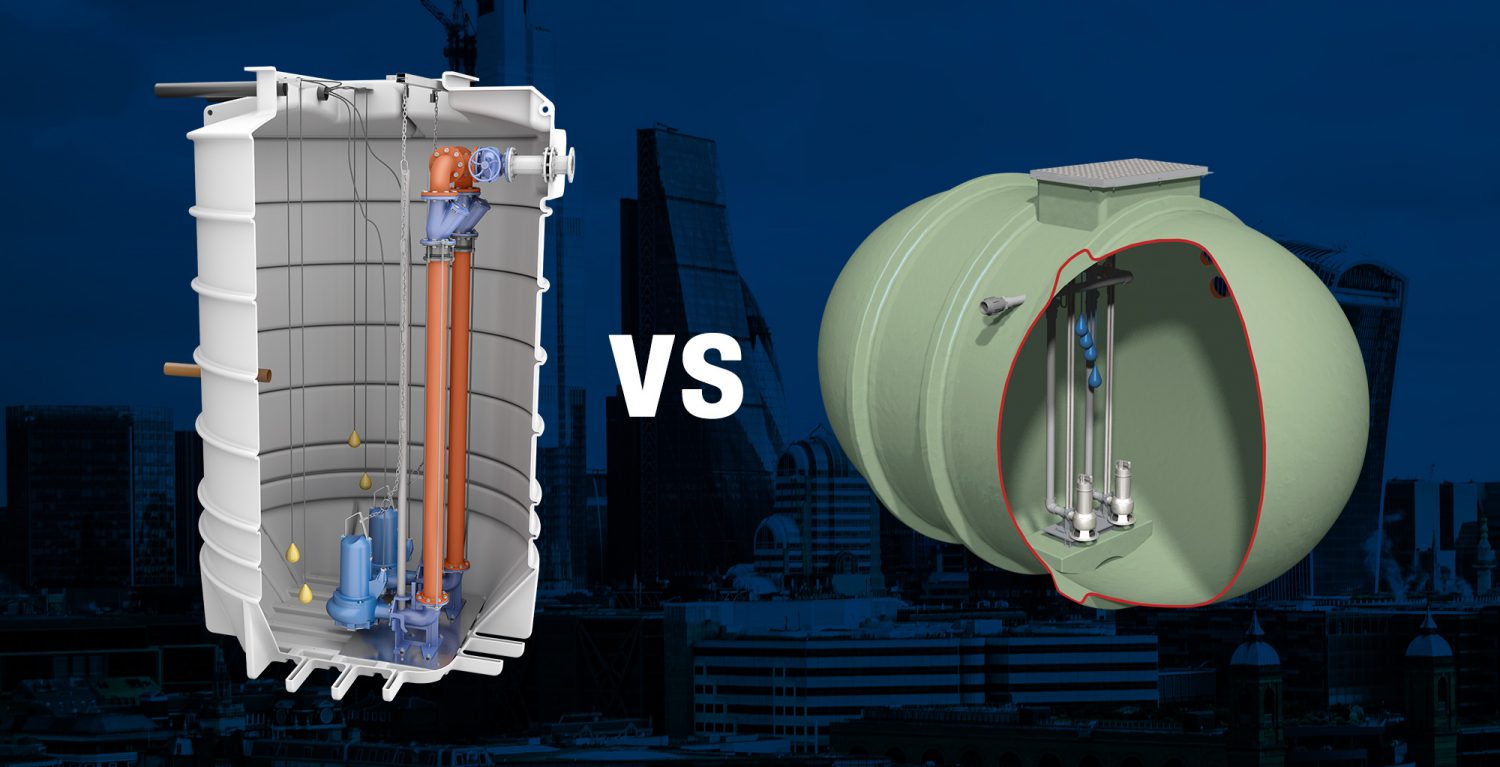Packaged pumping stations typically come in chambers constructed from polyethylene (PE) or glass reinforced plastic (GRP).
In this article we compare these materials so that you can make an informed choice for your project.
Manufacturing process
Polyethylene tanks are made using rotational moulding. A precise quantity of polyethylene powder is put in the mould; the amount added determines the thickness of the walls. The mould is then heated to melt the PE and rotated in two axes to ensure an even thickness of material. All of this is computer controlled and fully automated. This results in a predictably high-quality chamber time after time.
In contrast GRP chambers are typically constructed through a labour-intensive manual process. For this reason, quality control becomes very important as defects can be easily introduced.
Unlike polyethylene which is one solid material from outside to inside wall, the GRP chamber wall must be coated to create a smooth waterproof surface. This too adds to the time required and the possibility for defects.
Polyethylene wins
Lead times
Assuming the chambers are not available from stock, lead times for build-to-order polyethylene chambers are typically available in one to two weeks. For GRP this could be anything from 4 to 10 weeks subject to size. The primary reason is the advantages in manufacturing method above.
Polyethylene wins
Cost
Similarly, GRP chambers are more expensive than polyethylene for a given capacity. Again, the primary reason is the difference in manufacturing method, as building a GRP chamber requires more manual labour and is a more complicated process.
Polyethylene wins
Ease of working
Polyethylene is easier and safer to work. Inlets can be drilled quickly and simply using hole cutters to produce clean, safe edges.
Holes drilled in GRP will have rough edges which require finishing. Cutting and drilling will create fine glass fibre particles in the air which is hazardous to the operative. Care must be taken to protect the surface coatings.
Polyethylene wins
Resistance to damage and deformation
GRP is brittle and easily damaged by impact or stress. Notable points of weakness are at seams such as between cylinder and turret. In situ repairs are difficult to achieve. A mistake on site can be very costly.
GRP chambers usually have reinforcing ribs; incorrect hoisting can stress weaker parts of the body which can result in cracking due to the materials brittleness.
In contrast, our MagnaPro polyethylene chambers are very robust. Of course they can be damaged if enough force is applied, but it’s much more difficult to do so. Reinforced lifting eyes make hoisting simple and safe.
Polyethylene wins
Capacity
This is where GRP comes into its own. Polyethylene chambers are always limited to the size of the mould available, whereas GRP chambers can be simply extended to any length required. The limit is logistical – transporting it from factory to site, and hoisting it into position without damaging it.
GRP wins
Maintenance
Once in the ground a correctly installed polyethylene chamber does not require maintenance. In contrast the seams of GRP chambers must be checked periodically, which will require confined space entry.
Polyethylene wins
In conclusion
Due to the many advantages they offer, we will always recommend a polyethylene MagnaPro chamber when one of a suitable capacity is available.
However, for very large capacities there may be no alternative to GRP. And it’s important to remember that a well-made, correctly installed and well-maintained GRP chamber will serve admirably for the lifetime of the packaged pumping station.
For further information or to discuss your project requirements please call 01442 211 554.

